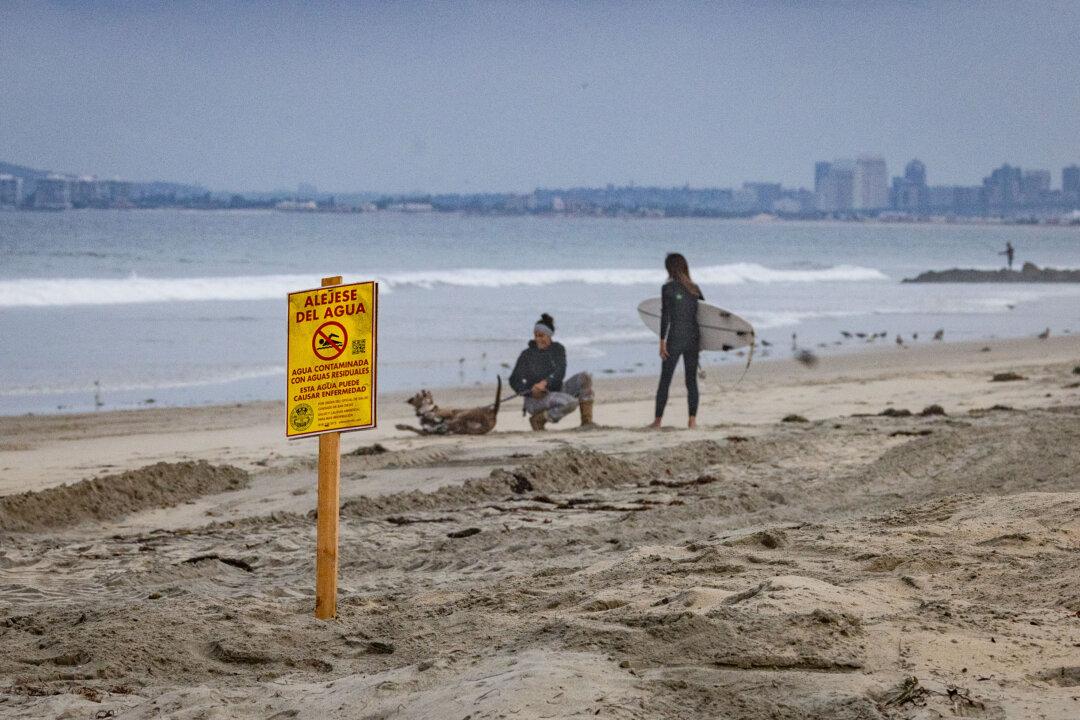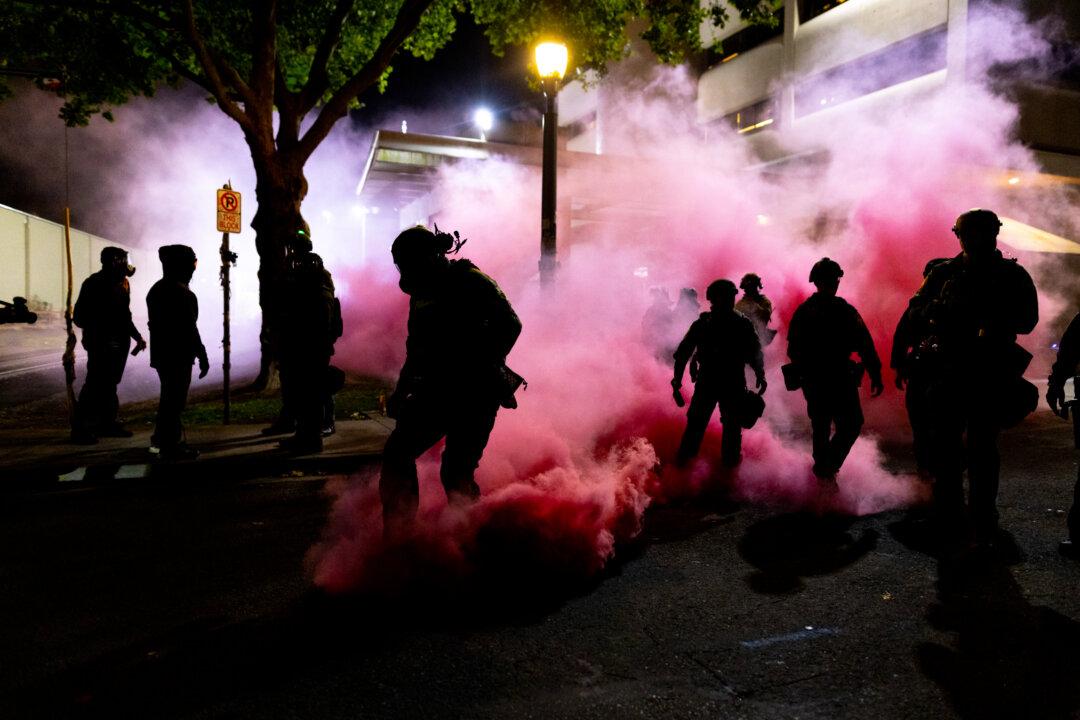IMPERIAL BEACH, Calif.—When the sunrise hit Imperial Beach, it illuminated a line of signs along the shore warning beachgoers to avoid contact with the water, as the faint scent of rotten eggs hung in the morning air.
“Most people just find waves to ride more north of here nowadays,” local surfer Jani Garcia, 39, told The Epoch Times as she looked out at the warning signs.




